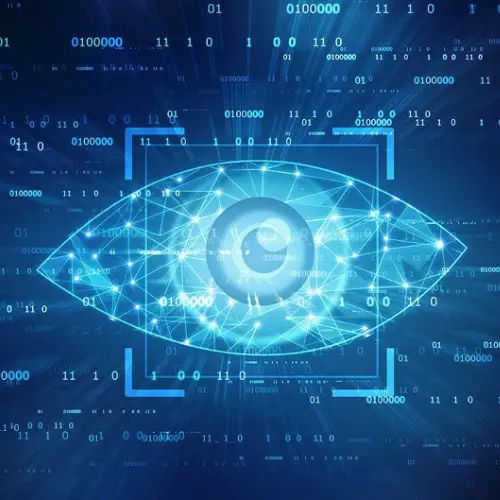An Introduction to Computer Vision with Python in 2023
Computer vision is a field of artificial intelligence that focuses on teaching computers to interpret and understand the visual world. It involves using algorithms, deep learning models, and other techniques to enable machines to recognize objects in images or videos. Computer vision can be used for various tasks such as facial recognition, object detection, image segmentation, motion estimation & tracking etc.
Importance
The importance of computer vision lies in its ability to make decisions based on what it sees without any human intervention. For example if you are making an autonomous vehicle then you need computer vision so it can detect obstacles and take appropriate action like slowing down or stopping when needed. Similarly if you want your security system at home or office automated then also computer vision will come in handy by recognizing people’s faces who have access permission into the building while denying entry for those who don't have one.
About Python
Python is one of the most popular programming languages used in machine learning projects due to its simplicity & readability compared with other programming languages like Java & C++. Python comes with many libraries which makes development faster, some important ones being OpenCV, TensorFlow, PyTorch etc which are specifically made for image processing related tasks. This blog post aims at introducing beginners into this field by providing them basic knowledge about concepts behind machine learning applications involving images as well as giving insights regarding how these libraries work together under-the-hood from a high level perspective so they can develop their own projects easily after going through this article.

Learn from the Best
Jump To Section
Background of Computer Vision
Evolution
In recent years, computer vision has evolved significantly with the development of deep learning algorithms that can be used for object recognition tasks such as facial recognition or autonomous driving systems. The use of Convolutional Neural Networks (CNNs) has allowed researchers to develop powerful models which are able to accurately recognize images even with small amounts of training data—a process known as transfer learning—which further increases their accuracy and performance levels compared with traditional machine-learning methods like support vector machines or decision trees.
Applications
The applications for Computer Vision are vast and varied – ranging from medical diagnosis tools such as X-ray imaging analysis software; security measures including biometric authentication systems; industrial automation through robotic arm control programs; entertainment technologies like augmented reality games or virtual fitting rooms at retail stores - all these rely heavily on Computer Vision technology today! Additionally, many companies use this technology in order to automate processes within their businesses by using image processing techniques such as text detection/recognition & Optical Character Reading (OCR). These automated solutions help reduce costs while increasing efficiency across multiple industries worldwide.
Earn As You Learn
Earn 25% commission when your network purchase Uplyrn courses or subscribe to our annual membership. It’s the best thing ever. Next to learning, of course.

Basic Concepts in Computer Vision Python
Image Representation in Python
Image Representation is the process by which digital images are stored in memory for use by a computer system. It involves converting the visual data from an image into numerical values that can be manipulated or analyzed using algorithms or other software tools. The goal here is to create representations of objects within an image so they can be understood more easily by machines than humans alone could manage without assistance from computers.
Python Image Processing
Image Processing refers to techniques used for manipulating digital images with the aim of improving their quality or extracting useful information from them such as identifying features like edges or textures in order to better classify objects in those pictures later on down the line when the time comes for feature extraction tasks (see below). Image processing typically includes operations like noise reduction (smoothing out rough areas), contrast enhancement (making dark parts brighter), color correction/balancing (adjusting hues) among other things all with varying levels of complexity depending upon what’s needed at any given moment during development cycles related projects involving this type of workflows associated with Computer Vision technologies today.
Feature Detection and Extraction
It refers specifically towards methods employed when attempting to recognize patterns within imagery being processed through either manual means via human intervention where experts manually outline regions interest before feeding them into machine learning models trained to identify certain characteristics based off examples provided beforehand OR automated approaches leveraging Convolutional Neural Networks capable of automatically detecting various types of features present inside inputted photos such as faces, eyes etc. Ultimately both strategies serve the same purpose providing reliable sources and data to further analyse downstream processes thus allowing end users to obtain results quickly and accurately regardless of the approach taken to get there in the first place.
Getting Started with Python for Computer Vision
Best Computer Vision Library Python
The first step is installing the necessary libraries: Numpy, Matplotlib, and OpenCV. Installing these packages can be done through your computer’s package manager or by downloading them directly from their websites. Once you have installed all of these packages on your system you are ready to start coding in Python for computer vision tasks.
Loading Image in Python
Next we will look at loading images using python so that they can be processed for various tasks such as object detection or facial recognition. There are several ways this can be accomplished including reading an image file into a NumPy array or creating an OpenCV instance from a given file path string. Whichever method works best for you should do just fine when the time comes to work with images in python code.
Image Processing in Python
Finally let's talk about processing our loaded image data with some basic operations like filtering and enhancement techniques which allow us more control over our final product than simply relying on raw pixel values alone would provide us access too. Filtering involves applying certain algorithms that modify each individual pixel value while enhancing typically refers more broadly towards sharpening up details within an existing picture frame itself before saving out any changes made during editing sessions. By combining both of these tactics together, users gain even greater power over what kind of output results they'll ultimately receive after completing their respective projects.
Applications of Computer Vision using Python
Object Recognition
Object Recognition is an AI-based technology that recognizes objects within images or videos based on their features like shape or color. This technology has been applied to many areas such as facial recognition for security purposes, automatic identification of products at retail stores using barcodes or QR codes, autonomous vehicles recognizing obstacles on the road etc. For example: Amazon’s "Just Walk Out" feature uses object recognition algorithms to detect items taken off shelves by customers so they don't need to wait at checkout lines when exiting the store.
Face Detection and Recognition
Face Detection and Recognition is another AI application which identifies human faces from digital images with high accuracy levels even under challenging conditions like low light environment or partial occlusion due to wearing glasses/hats etc. It has become increasingly popular recently because it makes authentication processes much more straightforward than traditional methods such as passwords/PINs. Face detection & recognition systems are being used everywhere, from unlocking smartphones (Apple's Face ID), access control systems for offices/buildings, attendance monitoring systems for schools & universities etc.
Object Tracking
Object Tracking is a type of computer vision technique which tracks objects over time in video frames by identifying their position relative to other elements present there, e.g. people walking around each other while shopping mall surveillance cameras follow them separately without getting confused about who's who. Image Segmentation involves breaking down an image into its constituent parts, i.e. pixels so that each piece can be classified according to different criteria - this helps identify regions with distinct characteristics more efficiently, thus making tasks related to analysing medical scans easier. For instance, radiologists use segmentation techniques in MRI scans to analyse tumours better.
Advantages of Computer Vision in Python
- Ease-of-use compared to other languages like C++ or Java. With just a few lines of code, you can create complex algorithms quickly and easily without having to learn complicated syntax or write lengthy programs from scratch.
- There are numerous libraries available that include pre-written functions which make development even simpler by allowing developers to focus on the logic behind their project rather than spending time writing code from scratch each time they need something new implemented into their program.
Disadvantages of Computer Vision in Python
However, there are some limitations when using Python for computer vision projects as well; one being speed since it’s an interpreted language so execution times tend to be slower than compiled languages like C++ or Java which can impact performance on larger projects with lots of data points needing to be processed quickly in real time scenarios such as robotics control systems where every millisecond counts towards overall accuracy levels achieved by the system itself.
Another limitation would be the difficulty debugging certain errors due to its dynamic type checking, making them harder to track down at first glance versus more statically typed languages like Java whose compiler will throw up an error right away if any unexpected behaviour occurs during runtime helping pinpoint problems much faster thus saving precious development time in return.
Conclusion
This blog provides readers a comprehensive guide to understanding the basics and getting started working on Computer Vision projects. It should give you a good foundation to build upon further exploration, deep diving into the fascinating world of Machine Learning and Artificial Intelligence.

Uplyrn for Teams
Get unlimited access of Uplyrn’s top video courses for your team. Host virtual classes to facilitate interactive learning. Create a more well-rounded, cross-trained workforce, and increase your team’s effectiveness.
Set apart your organisation with mentorship and coaching. Launch Mentorship and Coaching Programs that will facilitate your employees towards a deeper understanding of their passions, strengths, talents, personalities and values. Don’t you want to see your organisation better positioned for success?

For Lecturers
Join us to create and sell online courses. Bring your in-person classes to life online. Transform your knowledge and skills into a thriving teaching business. Stay focused on what you love - we handle the rest.

For Mentors
Being a mentor serves as a way to give back and is an important development and learning experience. Guiding and helping rising talent is the best way to learn yourself.

For Coaches
Coaches gain satisfaction from helping people develop and achieve their goals. An opportunity to make a difference and see first-hand the huge impact you make on other people’s professional and personal lives.










Leave your thoughts here...
All Comments
Concise intro to Python in Computer Vision! Emphasizes simplicity, library benefits, and mentions application areas. Well-balanced overview! 👍🐍
After reading the blog, I've learned that computer vision involves teaching computers to see and understand images or videos. Python is a handy language for this with its easy-to-use libraries. I found it fascinating how computer vision helps in recognizing faces and objects. I feel excited to explore more about machine learning and AI. This blog was really helpful in introducing me to the fascinating world of computer vision and its applications using Python.
Reply